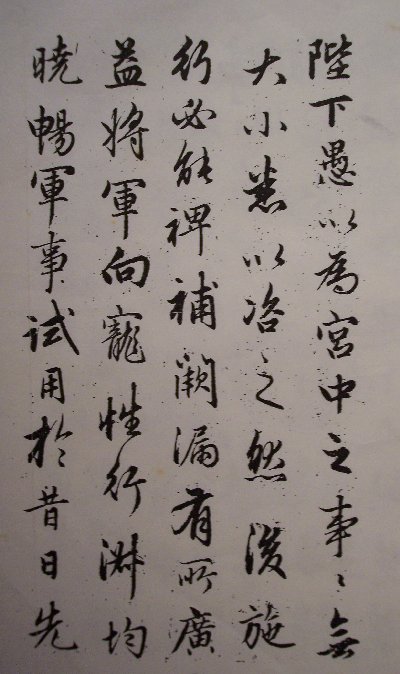DATES OF POWER AND THE LOCATION:
The Yuan Dynasty was ruled from 1279-1368 AD, also known as Mongol Empire. It was the first time the entire China was ruled by a foreign country. (1)
 Yuan Dynasty and the Mongol Empire(8)
Yuan Dynasty and the Mongol Empire(8)  Mongol Empire(1)
Mongol Empire(1)REASONS FOR THE TAKE-OVER:
Genghis Khan, the leader of the Mongols invaded northern to expand their land. (5) At the same, the Sung Dynasty was having financial problem due to treaties with other countries. The Mongols were able to conquer China due to their superior military capabilities while the Sung Dynasty military army was weak. (1)
LEADERS OF CIVILIZATION:
Genghis Khan invaded northern China as well as Khwarazm-Shah (Iran and Afghanistan) (5 p.34) He set up stage posts network so that messages could be passed quickly across the empire. He died in year 1227 back in Mongolia. The Mongol Empire managed to live so Genghis Khan’s sons and grandsons continued to expand the empire. (5 p.34) Finally in 1279, when the Sung Dynasty fell, Kublai Khan (Genghis Khan’s grandson) took over the Yuan Empire. (1) (5 p.34)
 Genghis Khan (12)
Genghis Khan (12)  Kublai Khan (13)
Kublai Khan (13)CIVILIZATION LEADERS OUTSIDE OF CHINA:
In year 1309, Osman I (ruler of the Turksmen) set up the Ottoman Empire. (Southeast Europe, Asia Minor, North part of Africa) (5 p.31)(9) From year 1328-40, Ivan I (nicknamed Moneybags) ruled Moscow increasing the importance of Moscow. (5 p.46-47)
ACCOMPLISHMENTS:
As Yuan Dynasty was established, Kublai Khan rebuilt and expanded the Grand Canal, improve roads and postal stations. (10)Before Genghis Khan’s death, he set up stage post networks to send messages in a faster speed across the Empire. (5)
- ECONOMY:
The vast size of the empire resulted in more extensive foreign trade and foreign intercourse than at any other time before the modern period. (4) There was trade between East and West. (6) The Yuan Empire was bigger than any other Empire during the period. It occupied nearly half of Asia (Iran, Afghanistan, Korea, China, India) (5)
- ARTS:
Development of drama and the novel as a literary form (6) (10) Western musical instruments were introduced to the Chinese performing art. (6) Highly educated scholar-artists’ brushwork became calligraphic. (3) The famous calligraphers are Xien-Yu Su and Zao Meng-Fu. (2)
 Zao Meng-Fu's Calligraphs(2)
Zao Meng-Fu's Calligraphs(2)- RELIGION:
During the Yuan Dynasty, Islam was flourished by Muslims of Central Asia and Tibetan Buddhism was flourished. (6) Kublai Khan was in strong support of Buddhism. (11)
- GOVERNMENT:
Confucian governmental practices and examinations were brought back by the Mongols in hope of keeping control over Han society. (6) During the rule of Kublai Khan, Han Chinese were restricted from having several positions in the government, and the positions were given to foreigners and nomad. Khan tried to establish a uniform rule throughout China and even created new ministries to govern the empire. (11)
FALL OF THE DYNASTY:
In 1368, as Kublai Khan died, the Chinese drove the Mongols out because of the evil reputations they had (massacred people and destroyed cities). (5 p.34) The Chinese were heavily taxed resulting in an economy crisis. Other popular uprising groups combined with Hongjinjun’s military force known as ‘Red Head-Scarves Army.’ The combined groups rebelled against the Yuan army. (1) (7) The Empire also faced problems (major floods, droughts, epidemics) and the army was getting weak. (6) Since China became so poor, the Mongols no longer had strong interest in keeping hold of China. (1)
WORKCITED
1)"Yuan Dynasty." 8 Jan 2008 http://www.mnsu.edu/emuseum/prehistory/china/later_imperial_china/yuan.html
2) "Yuan Dynasty (1271 - 1368." 8 Jan 2008 http://blog.daum.net/kang54/9120627
3) Department of Asian Art. "Yuan Dynasty (1279–1368)". In Timeline of Art History. New York: The Metropolitan Museum of Art, 2000–. http://www.metmuseum.org/toah/hd/yuan/hd_yuan.htm
4) "Yüan Dynasty." Encyclopædia Britannica. 2008. Encyclopædia Britannica Online. 8 Jan.2008 http://www.britannica.com/eb/article-9078108
5) Miles, Lisa. The Usborne Illustrated 'ATLAS of WORLD HISTORY'. Broadway, New York: Usborne Publishing Ltd., 2001.
6) "Yuan Dynasty." Book Rags. 9 Jan 2008 http://www.bookrags.com/Yuan_Dynasty
7) "Yuan Dynasty." Travel China Guide. Travel China Guide Web Site. 9 Jan 2008 http://www.travelchinaguide.com/intro/history/yuan/decline.htm
8) "Yuan dynasty." Online Map/Still. Britannica Student Encyclopædia. 9 Jan. 2008 http://student.britannica.com/eb/art-54551
9) "Osman I." Encyclopædia Britannica. 2008. Encyclopædia Britannica Online. 9 Jan. 2008 http://www.britannica.com/eb/article-9057550
10) "Yuan Dynasty." Best Way to China. China-Window. 10 Jan 2008 http://student.britannica.com/eb/art-54551
11) "Yuan Dynasty." Alamo Community College District. 10 Jan 2008 http://www.accd.edu/sac/history/keller/Mongols/states1.html
12) "Image:Genghis-Khan 2.jpg." Wikimedia Common. 10 Jan 2008 http://images.google.com/imgres?imgurl=http://upload.wikimedia.org/wikipedia/commons/thumb/0/0b/Genghis-Khan_2.jpg/417px-Genghis-Khan_2.jpg&imgrefurl=http://commons.wikimedia.org/wiki/Image:Genghis-Khan_2.jpg&h=600&w=417&sz=39&hl=ko&start=7&sig2=IIwToSQZTyza2rg8RL8OmA&um=1&tbnid=RwWmuUyuxVdpRM:&tbnh=135&tbnw=94&ei=2zSGR5PoCYjihALo5IWBCQ&prev=/images%3Fq%3DGenghis%2BKhan%26svnum%3D10%26um%3D1%26hl%3Dko%26lr%3D%26sa%3DN
13) "Kublai Khan." Online Photograph. Encyclopædia Britannica Online. 13 Jan. 2008 http://www.britannica.com/ebc/art-12463